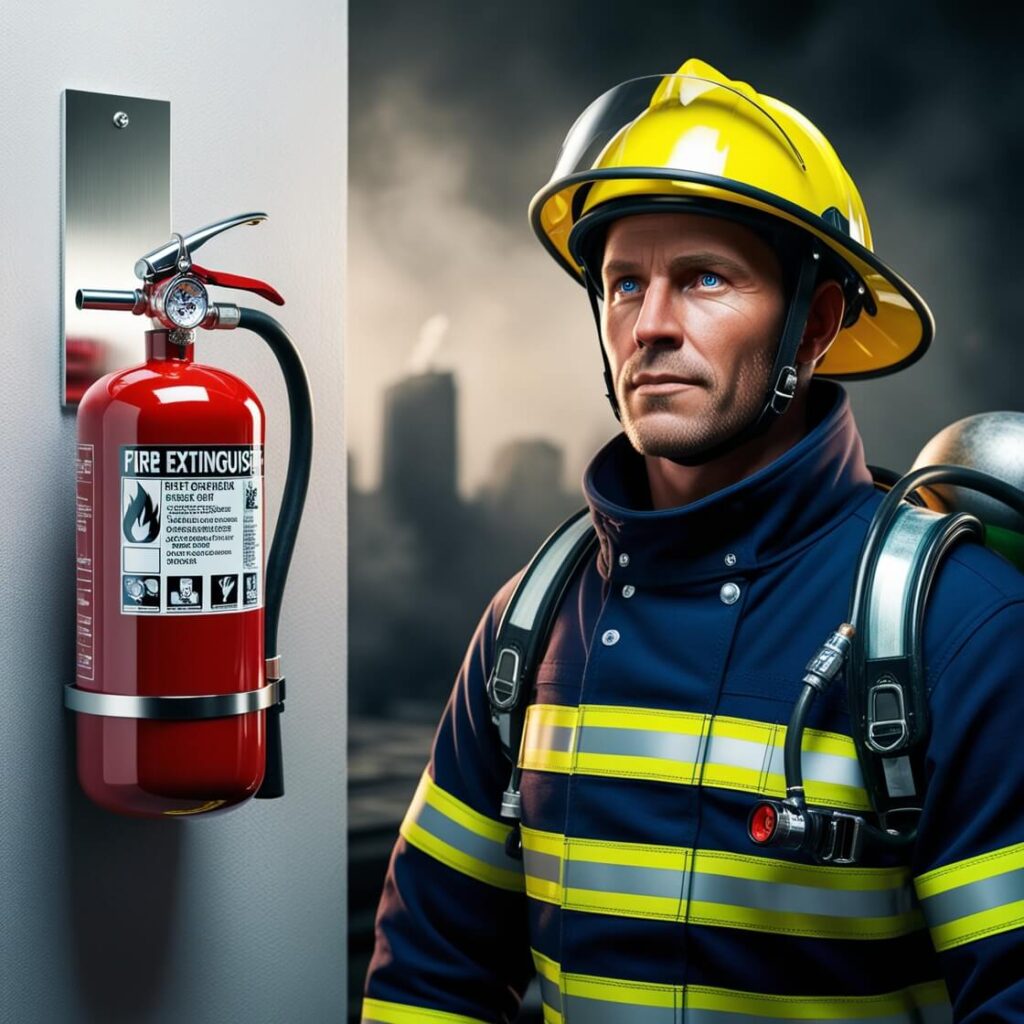Fire safety is a critical concern for every household. As parents, our top priority is protecting our loved ones, and understanding fire safety is key to achieving that. Fires can spread rapidly, but with a bit of preparation and knowledge, you can significantly reduce the risk and ensure your family is prepared in case of an emergency.
In this guide, we’ll cover essential fire safety tips that every parent should know. From preventing fires before they start to creating a solid fire escape plan, these practical tips will help you keep your family safe and secure.

1. Preventing Fires: The First Line of Defense
Prevention is the best way to ensure that a fire never starts in your home. Here are some key steps to minimize the risk:
- Stay in the Kitchen: Never leave cooking unattended. Most kitchen fires start when someone leaves the stove or oven unattended. If you must leave, ask someone to watch your food or turn off the heat.
- Keep Flammable Items Away: Keep paper towels, dish cloths, and other flammable items away from the stove and oven. Clean up spills and crumbs to avoid grease fires.
- Use the Right Equipment: Ensure you have a fire extinguisher in the kitchen and that it is rated for grease fires (Class K). Make sure everyone in the family knows how to use it.
1.2 Electrical Safety:
- Inspect Cords and Appliances: Regularly check electrical cords and appliances for damage. Frayed cords or broken plugs can be a fire hazard.
- Avoid Overloading: Don’t overload electrical outlets or power strips. Use only one high-wattage appliance per outlet, and avoid daisy-chaining power strips.
- Install Smoke Alarms: Place smoke alarms on every level of your home, including inside bedrooms and outside sleeping areas. Test alarms monthly and replace batteries annually.
1.3 Heating Safety:
- Keep Heaters Clear: Keep space heaters and other heating devices at least three feet away from anything that can burn, such as paper, clothing, or furniture.
- Use Space Heaters Safely: Only use space heaters that have been tested for safety by a recognized testing laboratory. Turn them off when leaving the room or going to bed.
- Have Heating Systems Inspected: Have your furnace or heating system inspected annually by a professional to ensure it is in good working condition.
2. Creating a Fire Escape Plan
Having a fire escape plan in place is crucial for ensuring that everyone in your home knows what to do in case of a fire. Here’s how to create and implement an effective plan:
2.1 Map Out Your Home:
- Draw a Floor Plan: Create a simple floor plan of your home showing all rooms and exits. Identify two ways out of each room, including windows, and mark them on the plan.
- Identify Meeting Points: Choose a safe meeting spot outside the home where everyone will gather after evacuating. This should be a location away from the house, like a neighbor’s yard or a street corner.
2.2 Practice Regular Drills:
- Conduct Fire Drills: Practice your fire escape plan with your family at least twice a year. Make sure everyone knows how to get out of the house quickly and safely.
- Simulate Different Scenarios: Practice different scenarios, such as a fire in the kitchen or in the middle of the night, to prepare for various situations.
2.3 Teach Fire Safety to Children:
- Explain the Plan: Teach your children about the importance of fire safety and how to follow the escape plan. Explain that they should never hide from firefighters and that they should always leave the house immediately if they hear the smoke alarm.
- Firefighter Safety: Make sure children understand that they should stay low to the ground to avoid smoke and heat. Show them how to crawl under smoke to find their way to an exit.
3. Understanding and Using Fire Extinguishers
Fire extinguishers can be crucial in controlling small fires before they become unmanageable. Here’s what you need to know:
3.1 Types of Fire Extinguishers:
- Class A: For ordinary combustibles like wood, paper, and cloth.
- Class B: For flammable liquids like gasoline, oil, and grease.
- Class C: For electrical fires.
- Class K: For kitchen fires involving cooking oils and fats.
3.2 How to Use a Fire Extinguisher:
- Remember PASS: Follow the PASS technique—Pull the pin, Aim the nozzle, Squeeze the handle, and Sweep from side to side.
- Use Properly: Only use a fire extinguisher if the fire is small and manageable. If the fire is spreading or you are unsure, evacuate immediately and call emergency services.
3.3 Regular Maintenance:
- Inspect Extinguishers: Check fire extinguishers monthly to ensure they are fully charged and in good condition. Replace or refill extinguishers as needed.
- Mounting: Keep extinguishers in easily accessible locations, such as the kitchen, garage, and near any major electrical appliances.
4. Fire Safety for Specific Situations
Different scenarios require tailored fire safety measures. Here’s how to handle a few specific situations:
4.1 If You’re Trapped
- Stay Calm: If you are trapped in a room, stay calm and stay low to avoid smoke. Seal gaps around doors with wet cloths to prevent smoke from entering.
- Signal for Help: Use a flashlight or signal from a window to alert firefighters to your location. If possible, call 911 and provide your location.
4.2 Dealing with Smoke:
- Crawl Low: Smoke rises, so if you need to move through smoke, crawl on your hands and knees where the air is clearer.
- Cover Your Nose and Mouth: Use a cloth to cover your nose and mouth to help filter out smoke and toxins.
4.3 Protecting Your Home:
- Fire-Resistant Materials: Consider using fire-resistant materials for roofing, siding, and decks. Maintain defensible space around your home by clearing brush and debris.
- Install Sprinkler Systems: If possible, install fire sprinkler systems in your home, especially in high-risk areas like kitchens.
5. Fire Safety Resources and Education
Staying informed about fire safety and having access to resources can enhance your preparedness. Here are some ways to keep up-to-date:
5.1 Utilize Community Resources:
- Fire Departments: Many local fire departments offer fire safety education and training. Check with your local fire department for available resources and community programs.
- Online Resources: Websites like the National Fire Protection Association (NFPA) provide valuable information and resources on fire safety and prevention.
5.2 Stay Educated:
- Attend Workshops: Participate in fire safety workshops or classes offered in your community to stay informed about the latest fire safety practices.
- Read Up: Regularly review fire safety guidelines and best practices to keep your knowledge current and ensure your fire safety measures are effective.
6. Keeping Your Family Safe Year-Round
Fire safety isn’t just for special occasions; it’s an ongoing commitment. Here’s how to maintain a focus on safety throughout the year:
6.1 Regular Home Inspections:
- Check Smoke Alarms: Test smoke alarms monthly and replace batteries at least once a year. Replace smoke alarms every 10 years or as recommended by the manufacturer.
- Inspect Heating Systems: Have your heating systems and chimneys inspected and cleaned annually to prevent fire hazards.
6.2 Education and Awareness:
- Discuss Fire Safety Regularly: Make fire safety a regular topic of discussion with your family. Review your fire escape plan and update it as needed.
- Promote Fire Safety: Encourage friends and family to adopt fire safety practices and share tips on keeping homes fire-safe.

Conclusion: Empowering Your Family Through Fire Safety
As parents, our goal is to create a safe and secure environment for our families. By implementing these fire safety tips and preparing effectively, you can protect your loved ones and ensure that everyone knows what to do in the event of a fire.
Remember, fire safety starts with prevention and extends to preparedness and education. Take the time to review your fire safety practices, educate your family, and stay informed about the best safety measures. With these efforts, you’ll be well-equipped to handle any fire-related situation and keep your family safe and secure.



